Photo Finish
According to "Martin Guitars: A Technical Reference": "Most pre-1900 Martin guitars have a French Polish finish... Shortly after the turn of the 20th century, Martin began to use a varnish finish. Since this was French polished in the final stages of buffing, it often did not look much different than the earlier finish, although the varnish often developed a fine pattern of checking or crazing. The finishes on higher models is usually thicker and has a higher gloss than what is found on the less expensive models."
Tinted Finishes on Early C. F. Martin Guitars
Various tinted guitars...
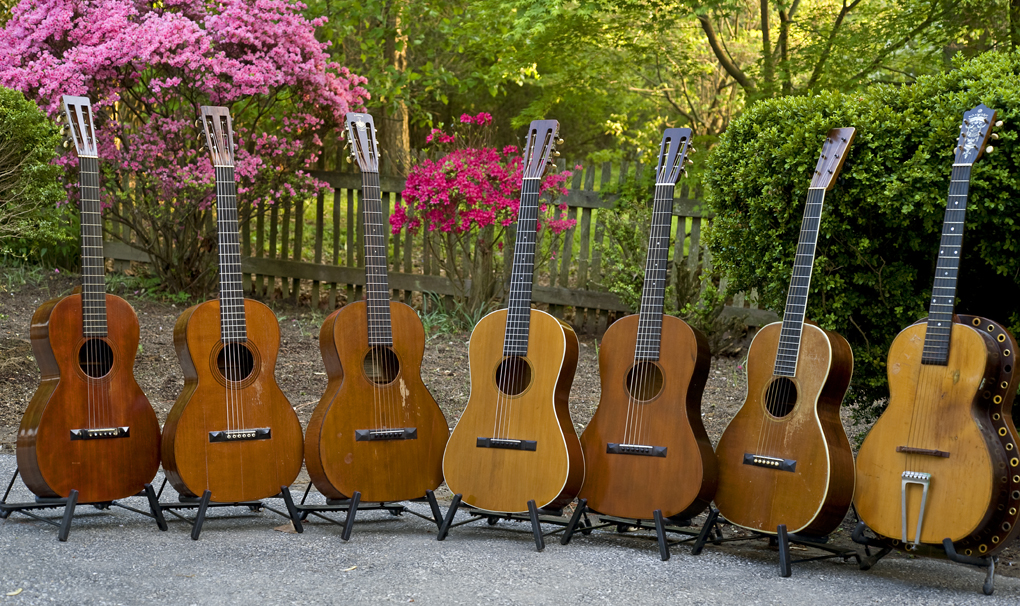
...including 1897 and 1898 Martins with dark tint & pumpkin tint options, Southern California Music spruce top sample,
light tint Ditson Style 22, Ditson Style 11 with $1 dark tint option, Olcott-Bickford 0-44, and Wm. Lange Paramount.
Note that every tint is slightly different.
Comparing the 1897 Martin with dark tint with the Ditson Style 11 with dark tint option.
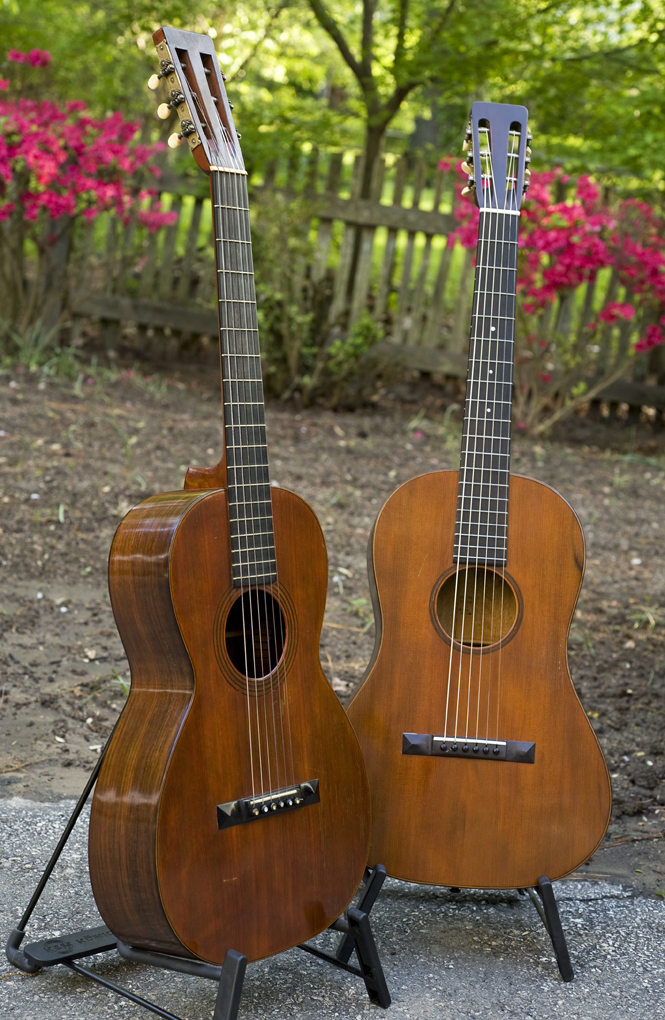
The 1897 martin has a darker tint.
Light tint Ditson Style 22, Spruce top sample Southern California Music, Pumpkin top 1898 Martin:
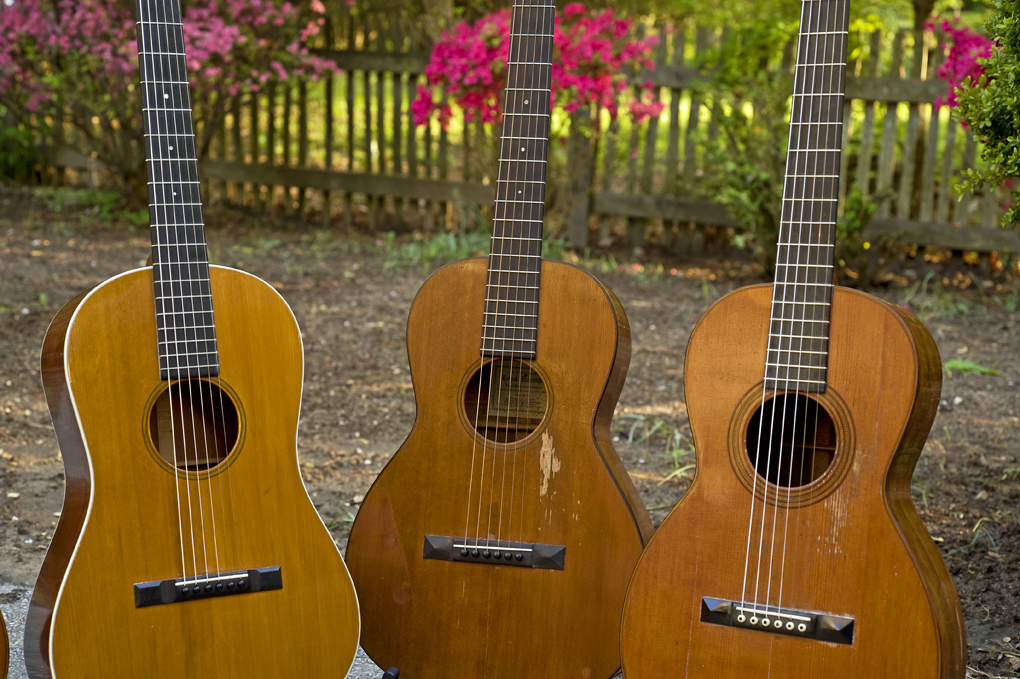
Spruce top sample Southern California Music, Pumpkin top 1898 Martin:
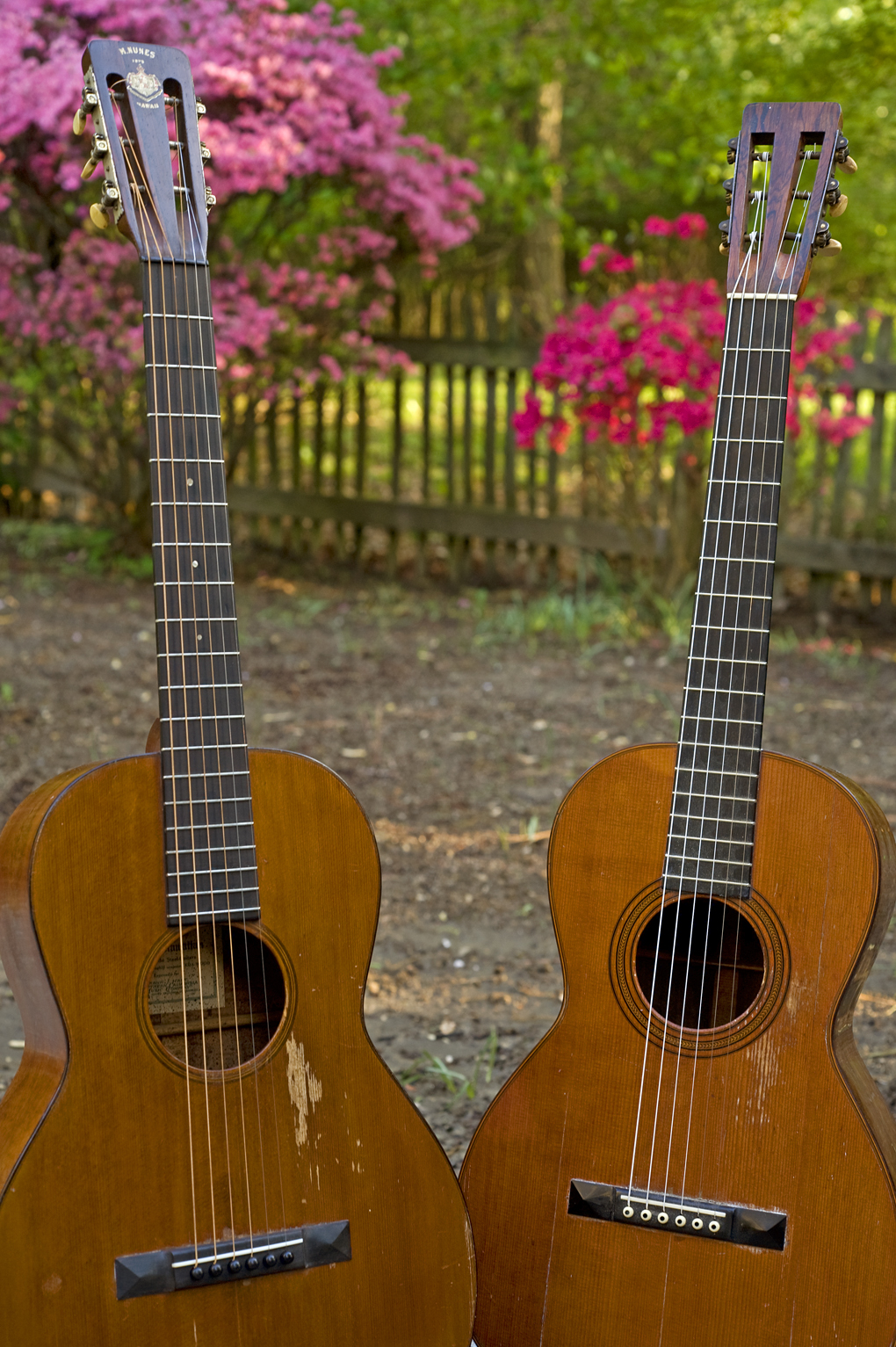
The 1898 Martin Catalogue lists the "stained face" as standard on the Style 28 and the larger sizes of the Style 21.
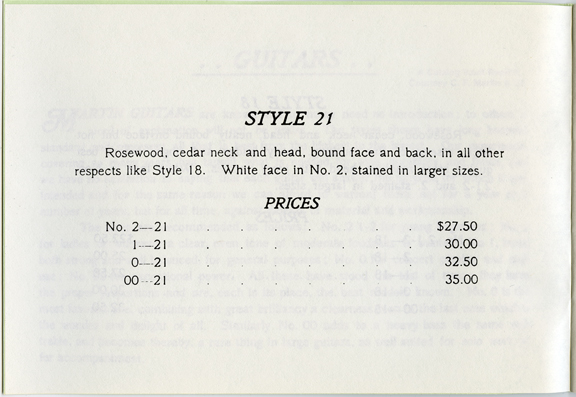
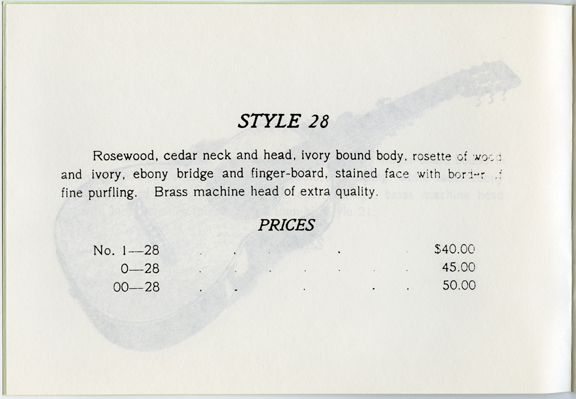
Spruce top sample Southern California Music, Olcott-Bickford Style 0-44, Pumpkin top 1898 Martin:
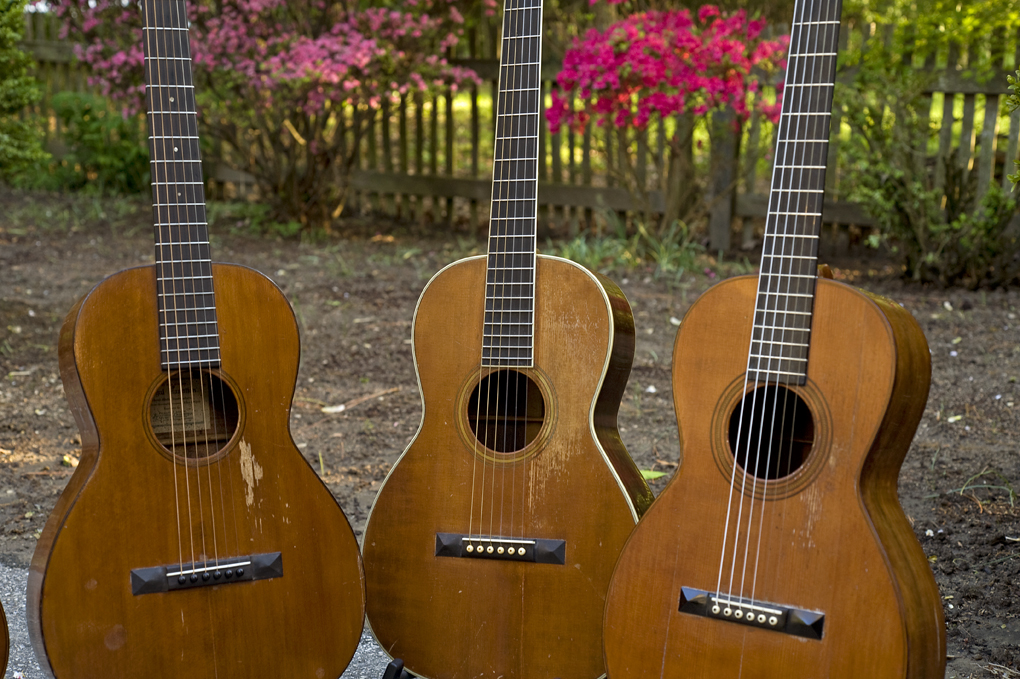
Over-Finishes or Over-Spray on C. F. Martin Guitars
A few words about "over-finish" or "overspray", refinished Martins, and values:
In the early days of French polish finishes, it was natural for Martin to add a bit of extra polish to spiff up a guitar when it came back to the factory. When Martin moved to lacquer, they continued the practice. This tended to happen most often to their best guitars, and the ones built for show, which means more pearl Martins than any others received this treatment. In the days of Martin's best work, the company often considered a guitar with over-finish to be superior to the guitar with the original finish, and swore that they sounded just as good, if not better.
Martin also routinely refinished guitars if they had a problem when they reached the dealer, and sold them as new, and refinished almost new guitars if they had a problem covered by the warrantee. No one ever thought of these refinished guitars as inferior, and your guitar might just be one of them without you even knowing it! I have one old Martin with a replaced back that I never would have known about from a simple inspection.
Refinishing usually involves sanding, which can thin the wood of the top, often making a guitar louder, but without the full sound and balance of the original guitar. Martin has always been expert in refinishing guitars, and routinely does so with minimal noticeable thinning and little detrimental effect to the guitars.
Some folks automatically value any Martin without untampered original finish as being worth only 50%. I believe that following this "50% rule" is painting with a very wide brush. Or refinishing with a very wide brush, perhaps. Old Martin factory finish work doesn't bother me at all, and to lump these in the same category as crude, amateur refins with thick globs of finish and thinned tops, makes little sense. Fred Oster of Vintage Instruments in Philadelphia told me the best sounding Dreadnaught he had heard in decades was a 1944 D-18 with an old, light factory overspray.
If it takes endless inspection and debate to decide if a guitar is indeed refinished or oversprayed or not, could it really be that big a deal?
As people understand the history and context better, I don't think these guitars will be devalued by more than 15% or 20% or so. They can be some of the best guitars out there. Once we learn more abut the culture at Martin at the time the work was done, I think attitudes will change greatly.
While I don't believe in heavily discounting for quality, factory overfinishes, I would pay a premium for a totally untouched original example!
How to tell if a Martin has an "over-finish" or "overspray"
There's no substitute for experience, but I'll try to give you some of the benefit of my experience along with what I've learned from others.
Almost all vintage Martins have at least some tiny dings and scratches. If you look carefully with a magnifier, the edges should show some definition. Early Martins tend to exhibit very fine micro-crazing. If the imperfections looked smoothed over or filled in, this is a sign of some form of touch up to the finish.
One of the easiest ways to spot an overspray on a Martin with a stamp on the back of the headstock is to see what the finish does to the stamp.
In my experience, the stamp is often the first place where the overfinish adds a blobby look, and reduces definition.
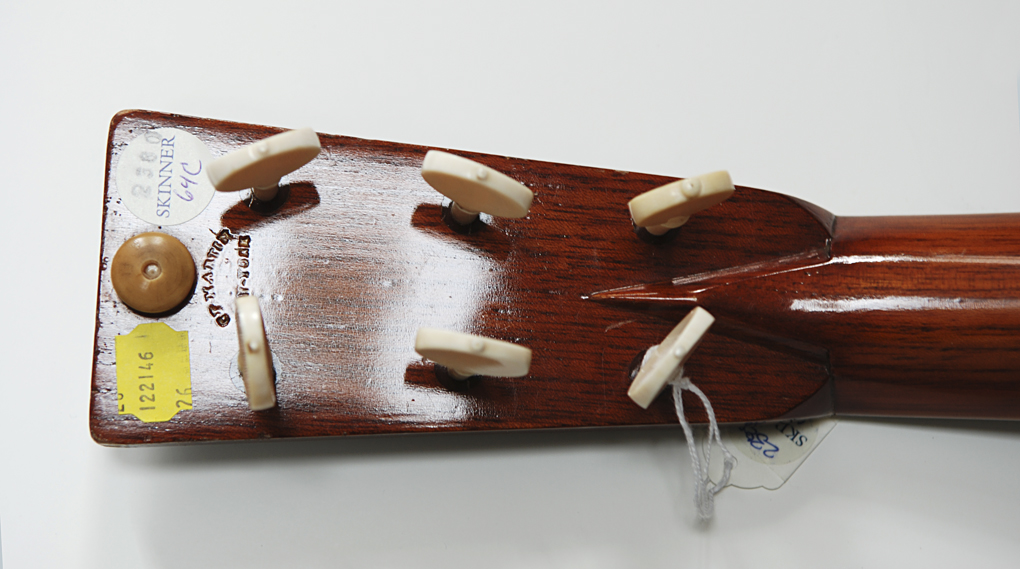
Headstock stamps can vary and take on many different looks, especially in different eras with different types of finishes, but the letters generally have a refined look to them.
A very light spray can hold definition, but the letters all tend to lose character and three dimensionality.
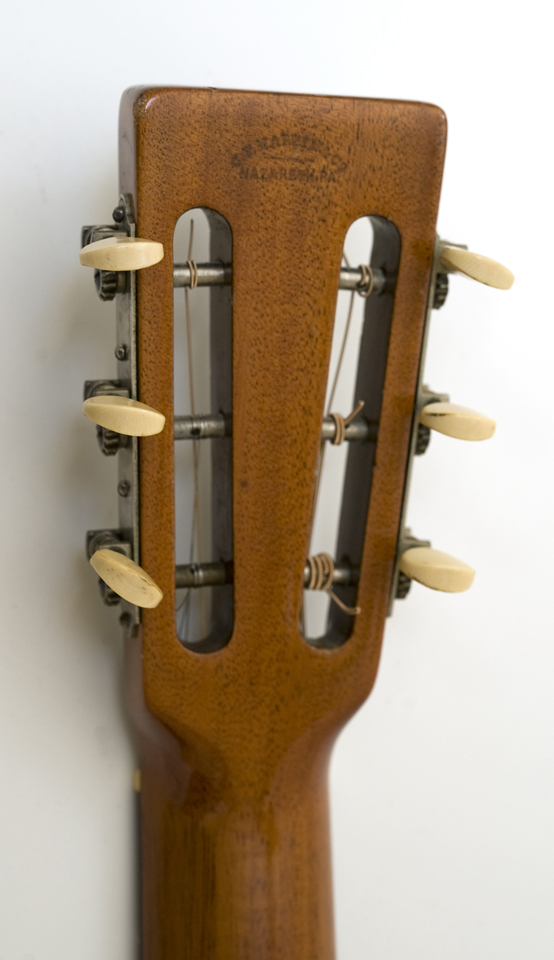
It is very common with Martin stamps for some letters to have a deeper imprint than others.
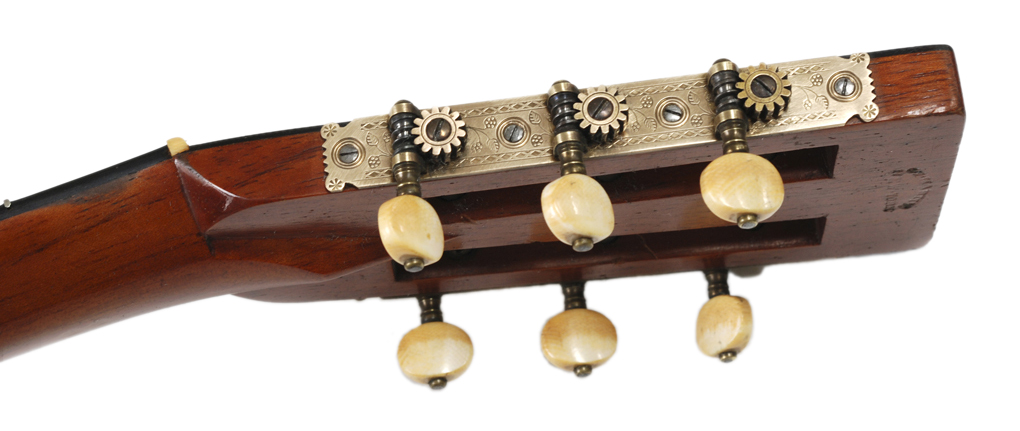
This should not be confused with overspray.
Martin finishes varied through the years, as materials and techniques evolved, so the best way to spot an overfinish is often by knowing how a finish from a particular year typically looks, and how a given example compares. We also know that Martin finishes had a tendency to look milky, for instance, in 1944, so many Martins from this year have been oversprayed.
Overspray on lacquer finishes have a tendency to create a wide crazing that has a characteristic look.
Overspray also has a tendency to dissolve celluloid binding and cause dark cracks in the binding.
When Martin finishes guitars with lacquer, the neck is sprayed before being attached to the guitar, and finish is only applied to the 12th or 14th fret, depending on where the neck joins the body. You will see that there is no finish on the side of the fingerboard where the fingerboard extension is adjacent to the top of the guitar. Any Martin with finish on the side of the fingerboard extension can be determined to have overspray.
Cleaning and Polishing Finishes on C. F. Martin Guitars
The patina of the finish can be one of the true delights of an old Martin guitar. Unfortunately, a new owner polishing an old guitar can destroy the original patina forever. This may not reduce the value by a dime, but once these guitars have all been polished, we will never again know what an original Martin finish from a given period actually looked like. This to me is just as harmful as an overspray from the Martin factory that many people believe to reduce the guitar's value by 50%.
Dealing with dirt, sweat, and nicotine residue is one thing.
Dirt and residue can can be eliminated with a soft cotton cloth, a gentle dishwashing soap, and a light touch. I've learned by mistake from doing too much at once how easy it is to damage an original finish. It's best to do a little amount at a time, to make sure you're not eliminating any finish.
Altering the texture of the finish itself is something else entirely.
Polish, by definition, is like sanding, rubbing the surface with a small grit to take away from the top layer of finish to eliminate the rough spots and leave a smooth surface. Martin guitars of different ages and finish types have varying signature textures to the finish that differentiate them. A Style 45 has been polished to a high gloss, while a Style 15 has a matte finish. A 1920's shellac based finish will have a different look than an early French Polish, or the distinctive transitional finish of 1930, or a glossy lacquer finish of the 1960's. And finishes naturally develop micro-crazing with age. Once these finishes are polished, both the original look of the finish, and the patina it has developed over time, will be gone forever.
There is also the issue of polishes with silicone leaving a residue that can make it extremely difficult to work on the guitar in the future.
I strongly suggest that you clean the crud, but avoid altering the finish itself unless it has already been irreparably altered.
Some serious collectors of vintage guitars have a regular routine to "improve" the finishes on the instruments in their collection. Scratches and dings in the dark areas of sunburst or shaded guitars, as well as mahogany backs and sides, often stand out as bright white against a dark finish. An instrument from a noted collection with scratches that are always dark, and never white, is as likely as not to have been restored.
Restorers use several methods to darken light scratches.
Some use a toothpick to drop lacquer thinner into the crack and clean out any "crud", and then finish with a highly diluted amount of either shellac or lacquer. Some use Butyl Cellulose applied with a toothpick, to soften the adjacent lacquer, followed by the application of lacquer thinner or thinned lacquer.
Some dip a Q-tip in a solution of lacquer thinner or retarder, shake off excess solution, and then touch the ding lightly with the Q-tip. The whitish look will disappear, while the ding will remain but look less obvious. Care is needed to avoid rubbing the Q-tip on the finish, as it will smear the finish, and to avoid applying so much solution as to make it run.
"Rustins" dark scratch polish, a wax based polish that is said not to harm a finish is also sometimes applied and then polished off with a soft cloth to make light scratches disappear.
To See Robert Corwin's Classic
Photography of Folk and Roots Musicians, visit: